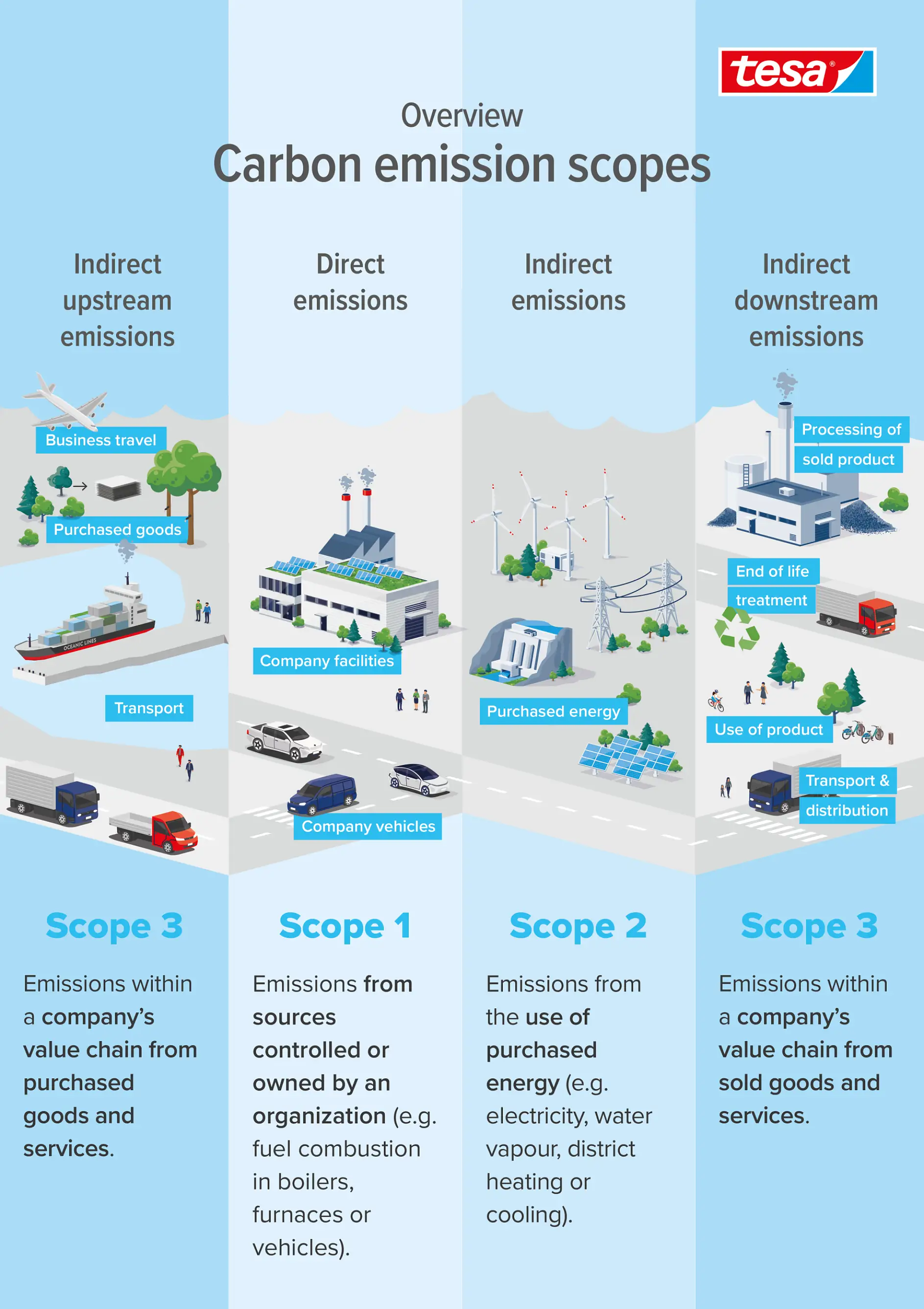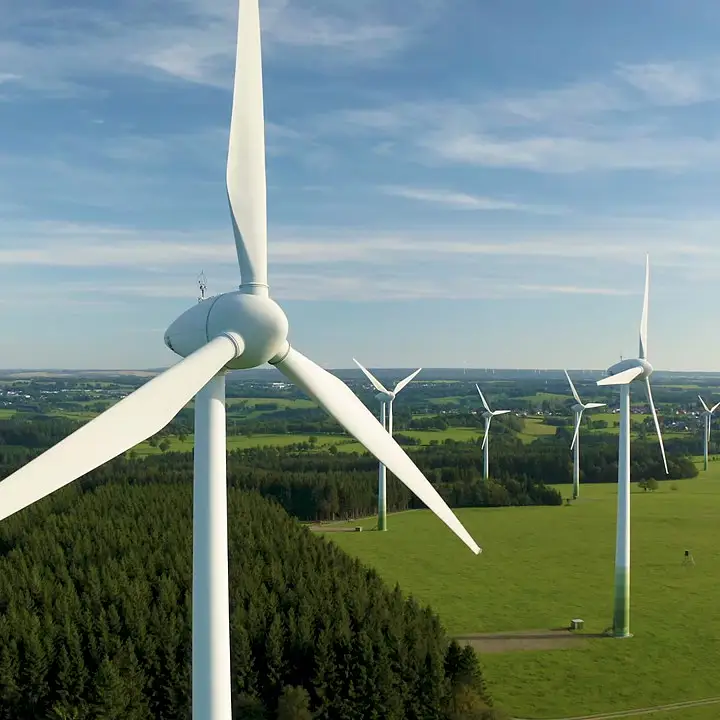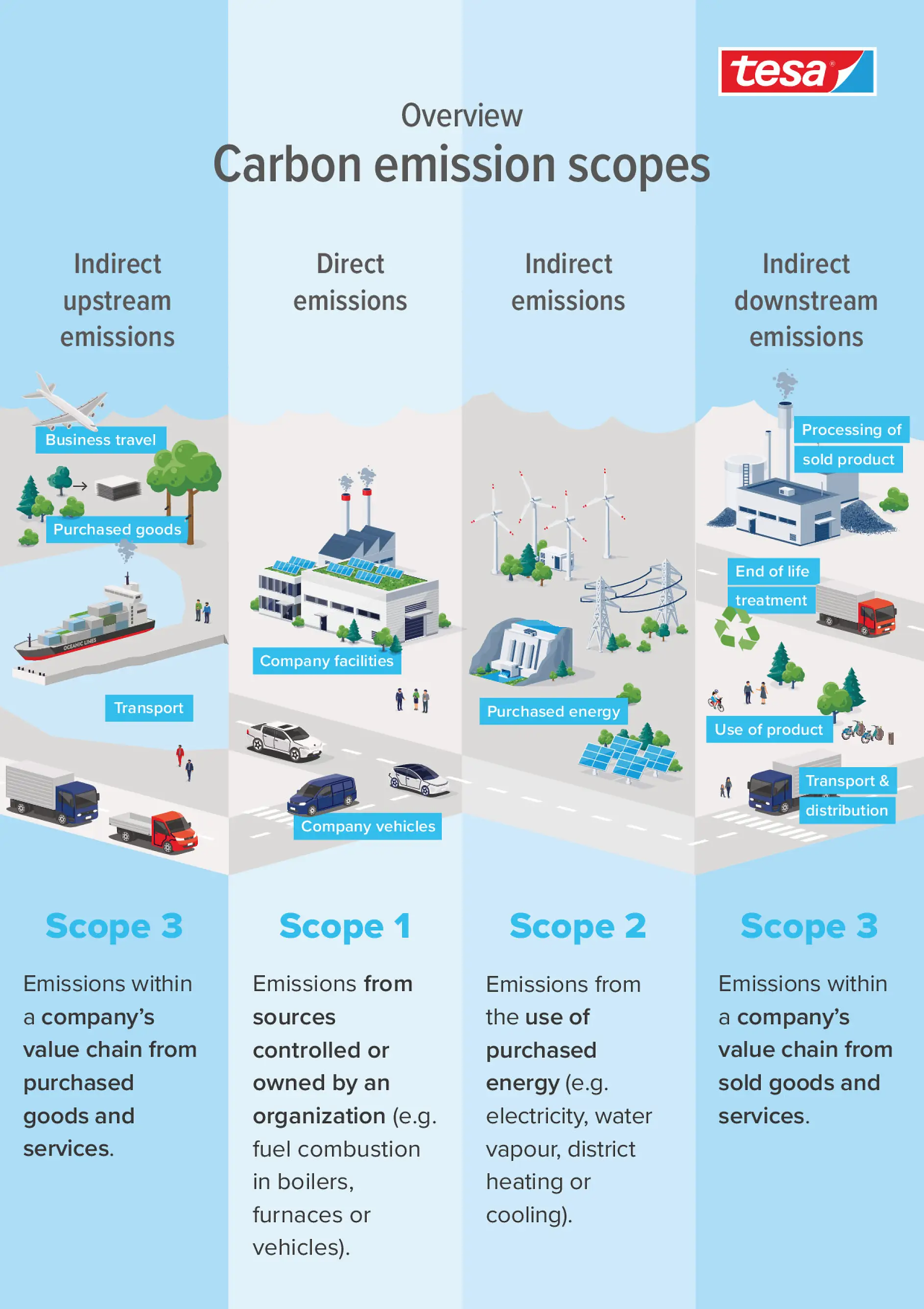The categorization into the various emission scopes was introduced by the GHG Protocol (Greenhouse Gas Protocol) back in 2001. Since then, there has been no way around them when it comes to calculating a company's emissions and creating a reliable GHG balance sheet. The GHG standards are the most widely used and most important in the preparation of greenhouse gas balances for companies worldwide. They take account of international climate policy and close gaps in national regulations.
The greenhouse gas (GHG) inventory or Corporate Carbon Footprint (CCF) captures the greenhouse gas emissions directly and indirectly caused by a company.



